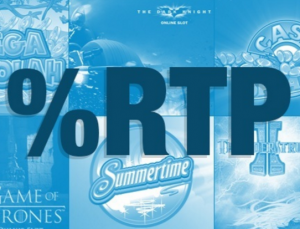RTP stands for ‘return to player’ and is a term commonly used by casinos, both land-based and online, referring to the percentage of wagered money a slot machine or video lottery terminal will pay back over time to players.
RTP Explained
RTP is basically the opposite of the house advantage. If, for example, a slot machine has a house advantage of 30%, this means that over time roughly 30% of the money wagered on it will be kept. A slot machine with a house advantage of 30% will therefore have a RTP of 70% because 30% of the money wagered on it will be kept and the remaining 70% will be paid back to the player over time.It’s important to remember that both the RTP and the house advantage are calculated over a long period of time and are an average expectation of how much the slot or video lottery terminal will pay out and keep. If you wager £100 on a slot machine that has an RTP of 70%, don’t expect to get exactly 70% of your money back. This is because the long-term prediction of how a slot or video lottery terminal pays out is an average calculated over a long period of time. If you’re playing at a slot with an RTP of 70%, sometimes you might get 60% of your money back or lower, or you might even get 80% or more of your money back. In other words, there’s no guarantee how much of your money you can expect to get back, so it’s always suggested that you only gamble with money that you have set aside and can afford to lose.
What Is Hit Frequency?
Another important term you should know is hit frequency. This simply refers to how often a winning combination will be stopped on. If a slot or video lottery terminal has a hit frequency of 6%, for example, it will stop on winning combinations about 6% of the time over a long period of time. As with RTP and house advantage, this is an average worked out over a long-term period, so if you’re playing on a slot or video lottery terminal with a hit frequency of 6% and you spin 100 spins, don’t expect exactly 6 of them to stop on winning combinations.Some slots and video lottery terminals have hit frequencies as low as 3% and others can have hit frequencies that are as high as 45%. You’ll find that video poker games usually have very high hit frequencies, though there’s a catch: most of the time you do get a winning combination, all you get is your original bet back. Games that have very low hit frequencies are the ones that tend to pay out larger cash prizes. If you’re playing a game with a low hit frequency, you won’t land winning combinations that often, but when you do the cash prize will likely be quite high. If you’re playing a game with a high hit frequency, you’ll land winning combinations quite often but the prizes won’t be as high.








